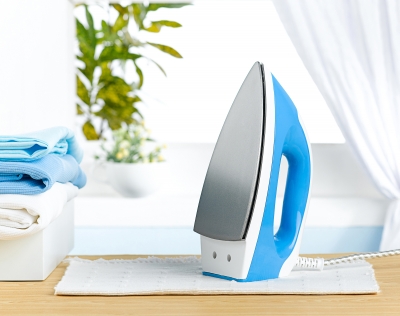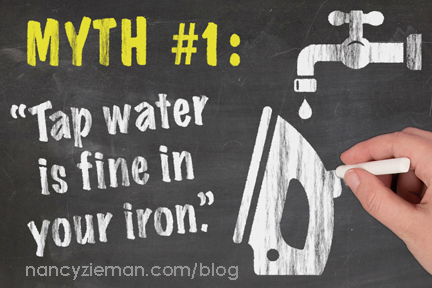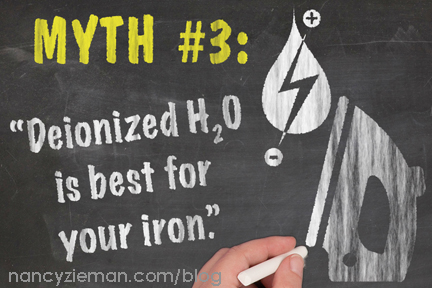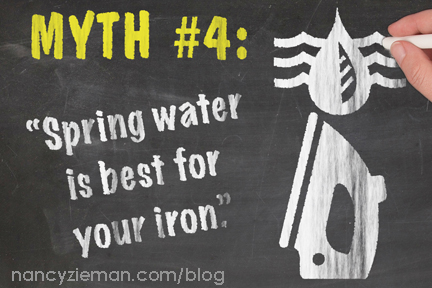Quilters depend on their irons – a lot. Using the right kind of water is important for optimum iron success.
 FALSE. Even though most high-quality iron manufacturers state that you can use regular tap water in your iron, it isn’t recommended especially if you live in the Midwest (where there is large amounts of sediment in the water) or if you use well water.
FALSE. Even though most high-quality iron manufacturers state that you can use regular tap water in your iron, it isn’t recommended especially if you live in the Midwest (where there is large amounts of sediment in the water) or if you use well water. FALSE…and TRUE. Distilled water is not a good idea for irons because it has no solid minerals in it, therefore making it a pure water. Pure water molecules are “hungry to get their atomic hands on carbon dioxide from their environment, making the water mildly acidic and prone to corroding metals.” Since irons are made of metal, using distilled water would not be wise unless your iron’s manual specifically states you CAN use distilled water because these irons are made of specific anti-corrosive materials. To be on the safe side, son’t use distilled water.
FALSE…and TRUE. Distilled water is not a good idea for irons because it has no solid minerals in it, therefore making it a pure water. Pure water molecules are “hungry to get their atomic hands on carbon dioxide from their environment, making the water mildly acidic and prone to corroding metals.” Since irons are made of metal, using distilled water would not be wise unless your iron’s manual specifically states you CAN use distilled water because these irons are made of specific anti-corrosive materials. To be on the safe side, son’t use distilled water. FALSE. Deionized water is less expensive than distilled water. It is defined as water that has had ions removed. Therefore, it is desperate for positively-charged ions. Putting water that’s starved for ions in to anything electronic is a bad idea, especially an iron which uses alternate current flows
FALSE. Deionized water is less expensive than distilled water. It is defined as water that has had ions removed. Therefore, it is desperate for positively-charged ions. Putting water that’s starved for ions in to anything electronic is a bad idea, especially an iron which uses alternate current flows FALSE. Spring water is full of minerals which can clog an iron’s reservoir and steam vents.
FALSE. Spring water is full of minerals which can clog an iron’s reservoir and steam vents.
So what is the best kind of water to use?
According to Emily, filtered tap water is the best water for your iron. That includes water that has been filtered through a system like Brita or a refrigerator with an ice-maker and water dispenser. A couple of other iron water tips from Emily:- Do not use vinegar in your iron unless the manual specifically says you can. Vinegar can react with some rubbers and plastics (like gaskets and the reservoir itself), causing problems with the insides of an iron.
- Be diligent with emptying your iron of water when you’re finished using it. Empty the reservoir while the iron is still hot and leave the lid open to help any stray droplets evaporate
Tags: Iron Water, Ironing, Ironing Tips, Nancy Zieman Blog








Thank you
Thanks so much for the information!